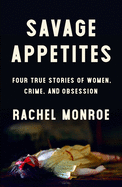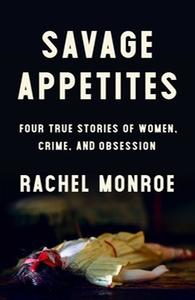
 Rachel Monroe has been "murder minded" since childhood, part of an overwhelmingly female demographic that consumes true-crime books, podcasts and television shows. It's an obsession that makes her a little uncomfortable. She develops a theory: "Perhaps we liked creepy stories because something creepy was in us." Monroe's first book, Savage Appetites: Four True Stories of Women, Crime, and Obsession, explores these interests through four case studies: detective, victim, defender and killer.
Rachel Monroe has been "murder minded" since childhood, part of an overwhelmingly female demographic that consumes true-crime books, podcasts and television shows. It's an obsession that makes her a little uncomfortable. She develops a theory: "Perhaps we liked creepy stories because something creepy was in us." Monroe's first book, Savage Appetites: Four True Stories of Women, Crime, and Obsession, explores these interests through four case studies: detective, victim, defender and killer.
Frances Glessner Lee chafed at the limits placed on her by 1890s high-society gender norms. Barred from attending college, she became an expert on early forensic studies and built the Nutshell Studies of Unexplained Death, miniature houses (fully functional, furnished and wired) portraying crime scenes. The Nutshells are still studied today: they are on display in Baltimore in the medical examiner's office.
Twenty-one years after the Tate murders, Alisa Statman moved into the garage apartment at the former Tate-Polanski residence. She avidly studied the case and befriended Patti, Sharon Tate's youngest sister. The two lived together and claimed domestic partnership. By the time of Patti's death, Statman was telling a very public story of Tate family tragedy that included herself, but all but erased Debra, the middle Tate sister.
The West Memphis Three were teenaged boys wrongfully convicted of murder because they were social outcasts. Their story, and one of them in particular, caught the attention of Lorri Davis, who moved cross-country and devoted her life to freeing him from death row; they are now married.
As an awkward teenager, Lindsay Souvannarath nursed a growing interest in mass murder. At 22, she met her match in a young man with a plan. He got the guns and she chose her outfit, but by the time she arrived, the cops were on to them. "I had a skull mask I was going to wear, and he had his scream mask. We would've looked perfect." Her accomplice killed himself, and Lindsay is currently serving life in prison for their plans.
These case studies, exploring the archetypes that structure our thinking about crime, are intercut with stories of Monroe's own life, her own guilty obsessions and research. Each story receives intelligent context: the "tough on crime" crackdown in the wake of the Tate murders; the panic over imagined satanic sacrifices that drove the conviction of the West Memphis Three; the fangirls who call themselves Columbiners and swoon over school shooters. She references Harriet the Spy, Ayn Rand, the Oxygen true crime television channel and a multitude of serial killers.
Monroe attends CrimeCon and Souvannarath's sentencing hearing, giving herself nightmares, and ultimately mines her personal experience of true-crime obsession to question the appeal of violent crime. Is it possible that within each of us resides detective, victim, defender and even some version of killer? Savage Appetites is a chilling, compelling examination of the darkness in us all. This is obviously a book for true-crime fans, as well as anyone interested in human nature. --Julia Kastner, librarian and blogger at pagesofjulia
Shelf Talker: A powerful, well-researched inquiry into why we find violent crime so fascinating, viewed though the stories of detective, victim, defender and killer.

